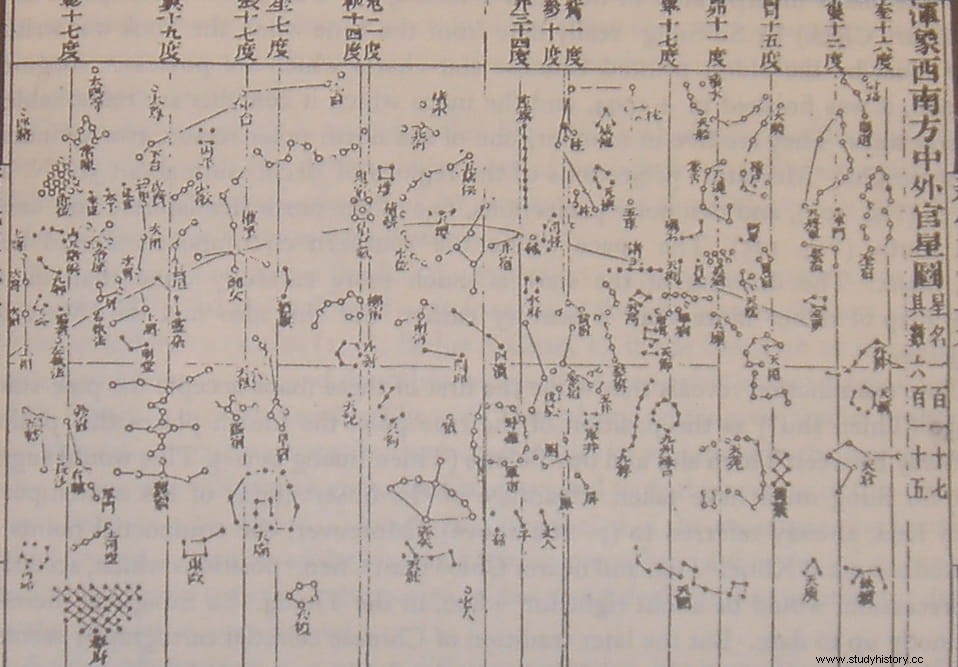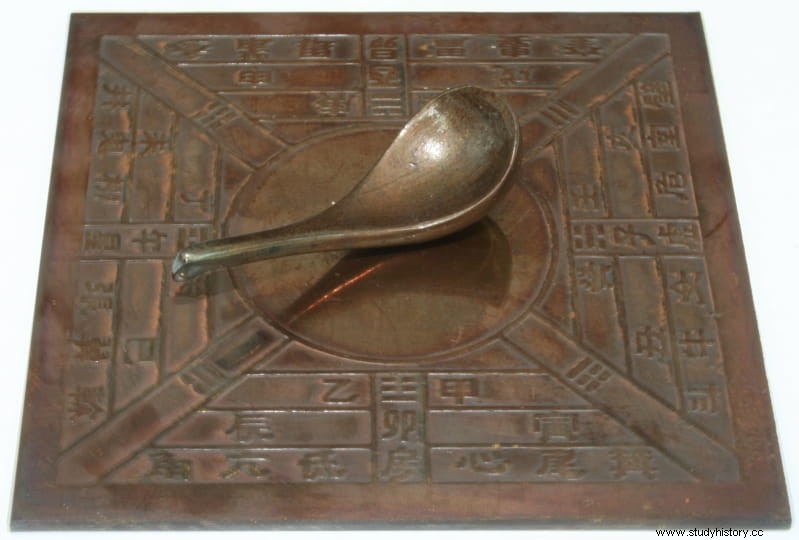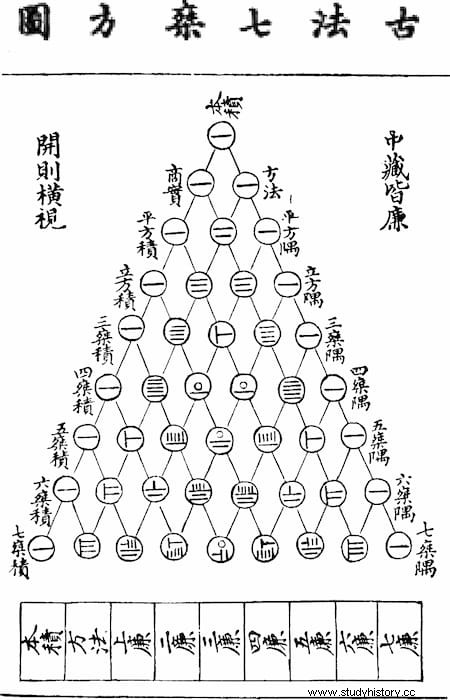The expression "Renaissance scholar" (or, by extension, "Renaissance man") is often used to describe those types of scholars of the early Modern Age characterized by a universal knowledge that covered a wide range of subjects:astronomy , geography, physics, mathematics, poetry, plastic arts, cartography, etc. Leonardo da Vinci would be the paradigm, although there are many more and we have seen some of them here. In fact, there were practically in all times and places, one of the most complete and impressive being the case of a Chinese character who lived in the days of the Song dynasty and to whom a prodigious number of inventions is attributed:Shen Kuo.
This ability to achieve a multidisciplinary wisdom that includes science, humanities and art is called polymathy and whoever achieved it was what was once known as homo universalis . But humanism, as a typical cultural movement of the XV-XVI centuries, is something that is limited to Europe and, if anything, to Hispanic America; Africa and Asia were -and in a certain way still are- two semi-unknown continents that did not begin to reveal their secrets to the world until almost the nineteenth century, at the risk of colonialism. Even China, despite its ancient history, retained a certain mysterious character for a long time.
This is why it is likely that very few have heard of Shen Kuo. He was born in Qiantang (present-day Hangzhou) in the year 1031, into a family of the provincial aristocracy. Following tradition, he was educated by his mother and uncle (who introduced him to the military arts) until in 1040 his father passed the examination to enter the imperial administration and had to move to Sichuan, as his first assignment, and then to Xiamen. His father passed away a decade later and the young Shen, after spending a long period of mourning for him, began to work in minor positions in the local civil service. 
He soon began to show signs of his ingenuity, devising a hydraulic irrigation and drainage system that he allowed hundreds of square kilometers of swamp to be used for cultivation. It was no accident; during the previous years he had displayed an extraordinary capacity for observation, writing down everything he had to do with the topography of the place and the management of the work. It is thus understood that in 1063 he followed in the footsteps of his father and also successfully passed the imperial exams. In fact, he did so brilliantly that he was given a high-ranking post in Yangzhou, where the fiscal intendant recommended him to the central government and married him to his daughter (remarried, as Shen had already had a wife and son before). ).
In a meteoric professional career, Shen was chaining the positions of ambassador, military commander, director of works and chancellor of the Hanlin Academy (a prestigious institution, admission reserved for high officials, dedicated to auxiliary tasks of the government, to interpret the texts of Confucius and to organize the aforementioned imperial exams). In 1072 he was put in charge of the Office of Astronomy, from which he improved the Chinese calendar after months of observing the celestial bodies, helped by the famous astronomer Wei Pu; the result was the so-called Calendar of the Twelve Solar Terms, which was used in agriculture.

Also, he was appointed Finance Commissioner in the central court. Then, Emperor Shenzong ordered him to inspect the state granaries to clarify irregularities and optimize the service, a mission that he reconciled with a visit to the famous poet Su Shi, at the time administrator of his native Hangzhou. Shen took copies of his works, which were highly critical of the Song, which would later be the basis of a tense polemic against him; however, for the moment, he only received congratulations (among them, a title of high nobility), becoming the main trusted man of the throne.
At that time, the court was divided into two parties, one conservative and one reformist called Xin Fa (New Policies Group); Shen attached himself to it, in part because its leader, Foreign Minister Wang Anshi, had been a friend of his father. Anshi, who has gone down in history for his policy of helping the people (tax cuts, creation of health and welfare aid agencies...), hence the Chinese leftist intellectuals of the early twentieth century considered him the father of socialism, had assembled a team of scholars to enforce his policy on the ground and considered Shen to shine even above others, making him his right hand man.
As such, Shen developed an extensive resume:he dredged the Bian Canal and used the extracted silt as fertilizer; he invented a system of canals with locks; he acted as a diplomat before the Kingdom of Liao, stopping the expansionism of his emperor; and he defended Yanzhou (present-day Yan'an) against the Tanguts (a Tibetan-Burmese tribal union that lived in western Xia, in Inner Mongolia), conquering several cities from them. Such efficiency was not enough to prevent the inevitable envy from playing a trick on him:a general ignored his strategic advice and fortified certain unuseful places, neglecting others of greater value, so that the Tunguts attacked them.

The real problem was that there had been a change of chancellor and, despite the fact that the strategic positions defended by Shen were the only ones that resisted, the new minister blamed him for the disaster. Dismissed and sentenced to six years probation, Shen turned to writing, during which time he published two geographic atlases for the government at a scale of 1:900,000, one of them in relief. That earned him a pardon and, although he did not regain his position, he did obtain permission to choose a place of residence and travel.
Poetry, zither, philosophy, art and Zen meditation were some of the activities to which he devoted himself, forming part of what was known as the Four Arts: quin (music), qí (game),shū (calligraphy) and huà (He drew). They were hobbies shared with his friends and members of the nobility.

If Shen's work as a manager was outstanding, even more so was that of an inventor. We have already seen his achievements in engineering, which should also include the first use of a dry dock to repair ships and theorizing about a graduated system of construction units. We also saw that he handled himself with ease in astronomy, perfecting both the calendar and the related instruments (gnomon, clepsydra, armillary sphere), affirming the sphericity of the celestial bodies (as opposed to traditional planism), improving knowledge about the orbits of the planets and ensuring that the Moon did not have its own light but rather reflected that of the Sun.
His analyzes of the magnetic declination allowed him to coin the term of true pole, the geographical one, different from the magnetic one. To do this, he measured the distance between the two with a compass that had the novelty of being magnetized with a magnet, compared to those used until then, magnetized by thermoremanence (magnetization of an iron, generally in the form of a fish, with heat). This compass, together with a compass rose with twenty-four points instead of the classical eight, based on the discovery of an astronomical meridian, was a fundamental instrument for Chinese navigators.
Added to this are his studies in geology, a discipline in which Shen proposed orogenic movement, soil erosion and sediment accumulation as the cause of terrestrial geomorphology and the reason for the existence of seashell fossils in mountains far from the sea. , the Taihangs. He even ventured the hypothesis of a climatic change, when observing petrified bamboo in regions that by his time were already desert. And if finding fossils took up a good part of his time, he also did recovering ancient objects and analyzing them to unravel their manufacturing technique, in what can be considered a kind of proto-archaeological science.

Time, but in the meteorological meaning of the term, was also the object of his interest, continuing the great Chinese tradition in this regard. He described tornadoes in East Asia (thought to be only in the West) and explained rainbows as the result of light refracting through rain; in that sense, he distinguished between the apparent altitude of the sun and the real one. Light, in fact, became a special object of Shen's attention, who carried out experiments with a pinhole camera (without a lens, with a small hole to let the light through) to explain how the images were inverted, comparing the focal point of a ustory mirror (concave, like the one attributed to Archimedes to concentrate the sun's rays) and the "collected" hole of the phenomenon of the camera obscura with an oar on a scale.
As can be deduced, Shen was an accomplished inventor. In addition to the aforementioned instruments, he devised a new and more durable type of writing ink based on the soot left behind by the smoke of burning rock oil (petroleum); He did not do it for nothing, but because he believed that oil was inexhaustible and, therefore, an alternative to the soot from burning pine wood, which was leading to the deforestation of large areas to obtain wood for the iron industry. In that sense, he also created a typographical printing system for movable metal types (until then they were made of wood), although it was not very successful due to the enormous number of characters that the Chinese language has.

Nor did mathematics escape his interest, due to his work as treasurer. He applied himself especially in geometry and trigonometry, in which he managed to represent very high numbers and simplify the traditional numbering method with rods. All this led him to practice to calculate taxes and design military logistics, as well as to distribute his troops on the ground. On a more playful level, he calculated the millions of permutations of a board game devised centuries earlier by the monk Yi Xing.
In anatomy, he discovered the different functions of the larynx and esophagus, in contrast to the contemporary belief that the throat contained three valves instead of two. He also encouraged the performance of autopsies. Along these lines, he was also copious in his work on pharmacopoeia, which he became fond of in his childhood and youth for having been somewhat sick. An empirical pragmatism in keeping with the rationalist character of Neo-Confucianist China of that period but which, in a certain way and in its chronological context, contrasts with Shen's belief in partial predestination and divination, the result of his taste for Taoist philosophy.
All this enormous work was reflected in several works that he wrote throughout his life. Most of them were lost because a new minister, Cai Jing, was determined to erase all memory of his predecessor Wang Anshi and his collaborators. Consequently, only six books were saved, but incomplete and four of them so manipulated that they are quite distorted. His most important work, published in 1088, is Meng Xi Bi Tan ( Essays from the Pond of Dreams), a multi-thematic anthology made up of half a thousand essays. Of the rest, there are single chapters or quotes in other people's works.
Meng Xi's title, by the way, is a reference to the garden estate outside Zhenjian where he wrote it, acquired in 1070. There he settled and spent his last years. He passed away in 1095 and was buried in Yuhang (a district of Hangzhou), at the foot of a hill. The tomb, lost for centuries, was rediscovered in 1983 thanks to documentation from the Ming dynasty and is currently protected. He would have liked to know that Meng Xi is too.
